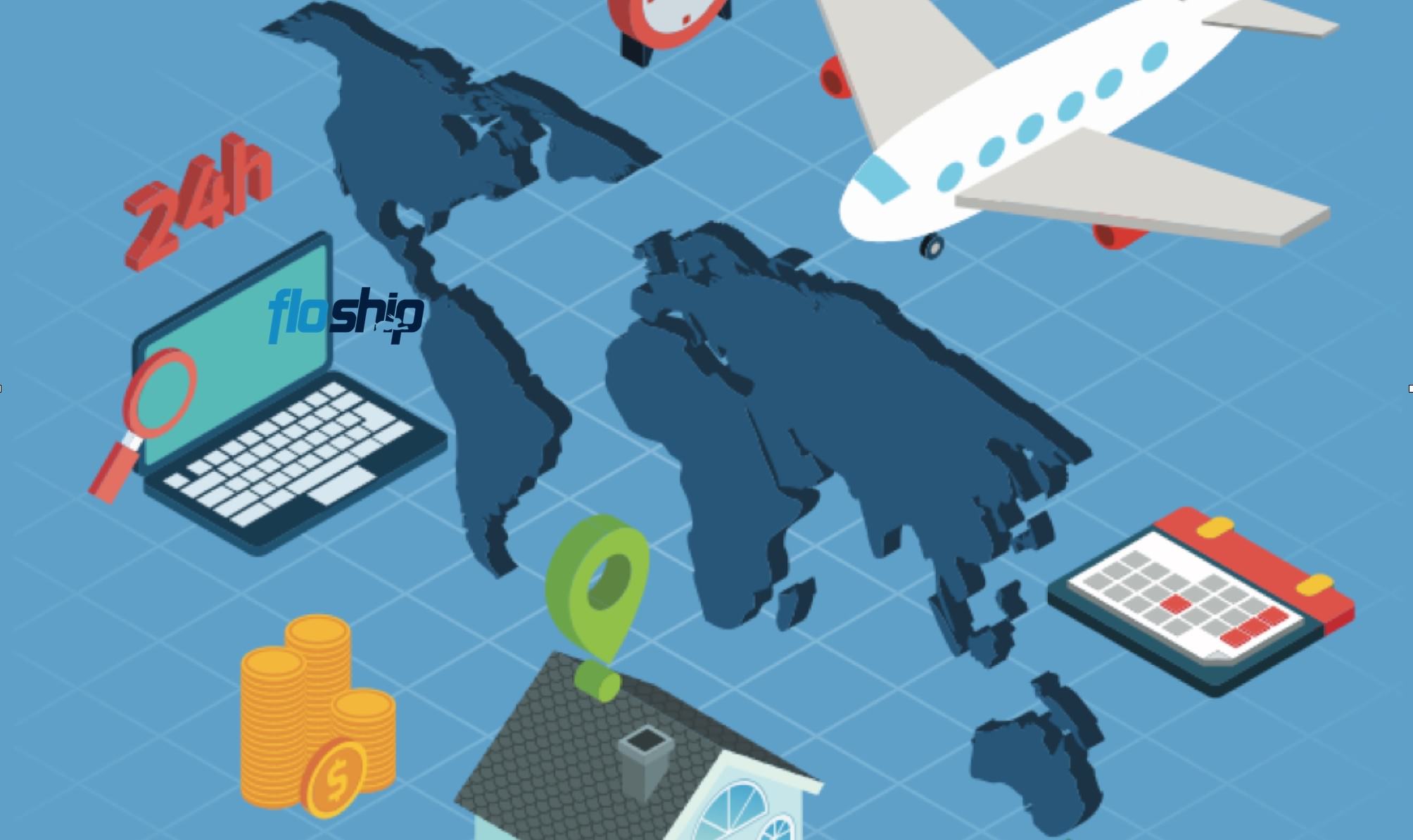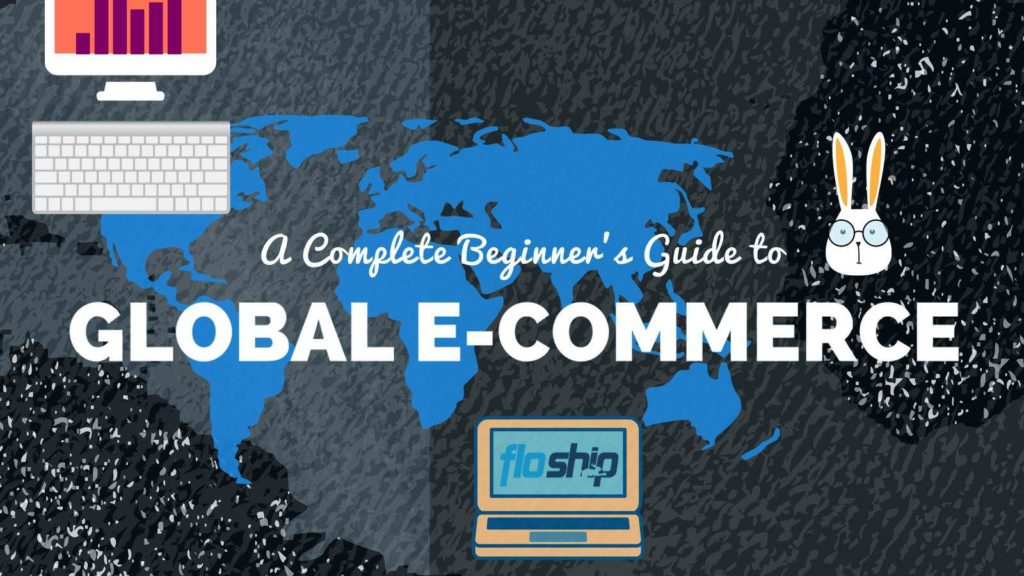For many e-commerce businesses, tapping into the global marketplace presents the ultimate goal for continued growth.
It’s not difficult to identify the merits of going global, and missing out in the wider online audience will likely mean missing out on an enormous opportunity to take your business to the next level.
Nonetheless, expanding into the international marketplace is far more complicated than simply providing some overseas delivery options and integrating Google Translate into your website.
There’s a great deal of thought preparation required, and a solid internationalization strategy requires a per-country approach that involves everything from tweaking your product inventory to adapting your entire marketing campaign.

Global e-commerce presents the following major challenges:
- Choosing which products are likely to be suitable for overseas marketplaces and how you’re going to make them appeal to local audiences.
- Deciding how to manage localized content, such as website translations, social media posts and content marketing.
- Managing local payment and shipping systems as well as any laws and restrictions that may apply.
- Assigning regional ownership and management of product inventories, invoicing and technical infrastructure.
- Identifying profitability margins after taking into account factors such as imports taxes, government restrictions and international shipping costs.
- Providing localized customer support to all of the countries served in the preferred language of that country.
As you can see from the challenges presented above, stepping into the world of global e-commerce is often not easy.
In fact, for some e-commerce stores, it might not even be desirable.
In the first setion, we’ll take a look at the various steps involved in choosing a market and defining an offering that should appeal to audiences in different countries while taking into account the potential profitability in each case.
Ultimately, this decision is not one to be taken lightly, so you will need to conduct extensive research into determining whether or not global expansion is right for your online business.
1. Choosing Your Market

When entering a foreign marketplace, there’s a lot of important factors to consider, and you have to learn to think and act like a local.
However, in many instances–depending on your sales volumes–and for practical reason, you’ll also need to hire local teams in each country or region you want to sell to, but we’ll take a more in-depth look into this process in a later section.
For now, the first step is to determine whether or not your products are suitable for selling in an overseas market.
You’ll need to weigh up the pros and cons and, if you have an e-commerce store selling a diverse range of products, you’ll have to tweak your entire product inventory to determine the potential profitability of each item you have to offer.
When choosing which foreign marketplaces to work with, you’ll need to consider the following factors:
Shipping Costs:
Unless you decide to maintain a local warehouse for storing your product inventory, it might not be cost-effective to ship larger items abroad, particularly if they need to be sent by plane or ship.
Competitor Presence:
Often, one of the main reasons to reach out to foreign buyers is because there’s little or no local competition in a particular country. Nonetheless, success often requires a particularly intensive marketing effort.
Market Size and Purchasing Power:
For example, you’re less likely to succeed selling expensive luxury goods to people in poorer countries where the majority of consumers probably prefer affordable and cheaper alternatives.
Local Preferences:
Consumer markets vary widely from one country to the next. For example, in Germany, apparel is the most popular category for online shopping while, in France and Italy, the travel category dominates.
Tax on Imports:
High import taxes can quickly eat into the potential profitability of certain products, and this is often the case with highly regulated industries, such as healthcare, finance and construction.
Legal Restrictions:
Some products, which might be legal in your home country, may not be legal in a proposed target market.
For example, there’s no point in selling electronic cigarettes in Denmark or Israel, where they are illegal.
Electrical System:
For consumer electronics retailers, regional electrical systems present some issues. For example, electronics designed for use in the US need a different power cable or adapter to work in Europe or the UK.
Different Languages:
You will generally need to provide translated product manuals for products that require them. The same applies to computer software and other digital content.
Economic Stability:
Some marketplaces are simply too risky to be worth investing in, particularly those that are politically or economically unstable or have been in the recent past.
Trade Agreements:
Some countries share trade agreements, the best known of which is the European Economic Area. EEA-based businesses, for example, can usually sell to other EEA countries with little or no restrictions.
Internet Penetration:
Although only really a concern in the world’s least developed countries, there’s little point in trying to sell products to countries with very few Internet users, such as Ethiopia or Madagascar.
Choosing the right markets is critical for long-term success. Get it wrong, and you could end up facing financial meltdown.
You’ll need to conduct extensive research to identify the most promising marketplaces, and the best options will depend largely on the actual products that you want to sell.
For example, dual-SIM mobile phones are extremely popular in developing countries with rapidly growing numbers of mobile and Internet users, such as India and China, but they’re almost unheard of in many western countries.
In other industries, such as fashion, cultural preferences vary enormously between very conservative Middle Eastern countries and typically liberal Western European countries.
2. Level of Service

When it comes to choosing the level of internationalization you’re going to apply, you can provide everything from local currency support and international shipping to full-scale translations and localized marketing strategies.
Simply opting for the more minimalistic approach will exclude a great deal of opportunities, particularly in countries where languages other than English dominate.
For example, Germany has the world’s second-largest e-commerce market, but very few Germans regularly buy from online stores that aren’t in German, despite English still being widely spoken in that country. In other words, the age-old adage ‘when in Rome’ applies.
The degree to which you can penetrate an overseas marketplace depends on how accessible you make your products and related marketing content.
There’s a lot of work involved, particularly when content translation is required but, making a half-hearted attempt is not likely to win you many customers.
You’ll want to work your way down the following list, which is presented approximately in order of importance:
a) International Shipping:
At the very least, you’ll need to be able to offer international shipping to get your orders to their buyers in the first place.
Another possible option, for larger ventures, is to rent a local warehouse; or, even better, work with Floship as your international fulfillment partner and you can reach the world by taking advantage of Floship’s global e-commerce fulfillment system>>>
b) Payment Systems:
It’s crucial that you support the preferred payment systems in the target country. For example, in Germany, a third of people pay online by direct debit, while in the UK, 90% of people prefer to pay with a card.
c) Localized Product Inventories:
As mentioned previously, your product inventory may need to be tweaked by taking into account the various criteria outlined in the first section.
d) Translated Content:
Unless your target market is another English-speaking country, you’ll have little hope of success if you don’t have your website and all content on it professionally translated into the local language(s).
e) Country-specific Content:
Simply translating your content is often not enough, particularly when it comes to your content marketing efforts.
You need to be able to provide content that actually appeals to local audiences.
Country-specific social media. Facebook might dominate in most of the world’s countries but, if you’re trying to reach a Russian audience, for example, you’ll be better off using VKontakte for your efforts.
In the following sections, we’ll take a more in-depth look into these critical elements of internationalized e-commerce and how to apply them.
However, before you start spending the big money by having your website translated and building local marketing teams, you’ll need to make your product selection.
This stage requires careful consideration, taking into account the factors mentioned in the first section. You will, of course, be able to adapt your product inventory further along down the line, but it’s wise to get as much right as possible during the preliminary launch phase.
After all, any e-commerce store is defined by the products it sells, particularly if it’s a brand-orientated retailer with a relatively limited selection of products.
3. Localized Website

Let’s take a more in-depth look into how to promote your e-commerce store in foreign markets.
However, once you’ve decided on which products to sell and which countries to sell them in, you’ll need to localize your website.
This is the first major step in going global for any business, and it involves most of the preliminary work.
Before you actually get started localizing your website, you’ll need to have a plan in place that takes into account the basics.
This plan must include the various phases of international growth, the people responsible for your international marketing efforts and, of course, the strategy itself.
To begin with, you’ll need to assign a head of your international division as well as separate teams, either in-house or outsourced, for the translation and marketing efforts in each country you want to serve. Another option, is to find localizers on gig sites like Upwork and even on Fiverr you can find people to help you to internationalize your webstore.
Ideally, every market should have its own manager who is in tune with local trends and consumer practices because, effectively, you’re basically starting a new company in a new market to begin with.
At the same time, it’s best to start small, meaning that you should work with one country at a time to minimize the risks and focus your energies on succeeding in one market before you move on to the next.
Shipping and Payments

The first step to take in any e-commerce internationalization strategy is to set up shipping and payment options that are specific to your target market.
It’s often assumed that international credit card payments are the most common way to pay for goods online but, there are some countries, such as China and Germany, where credit card payments only account for a small minority of online transactions.
For example, Giropay is one of the most popular online payment systems in Germany, while over a quarter of Russians use Qiwi, an e-wallet-based payment system.
If you’re not providing these preferred local payment methods, you’ll end up losing out on a large amount of business as shown by a sharp increase in shopping cart abandonment.
You’ll also need to think about shipping, since it can either eat into your profit margins quite dramatically or turn potential buyers off.
For larger and heavier goods, it might make more sense to source and store them locally, and this is indeed what many of the larger international online retailers do.
If you are able to store goods locally, you’ll need to choose from local shipping options as well as those that your local audience generally prefers.
As with payments, the more shipping options you can offer, the better.
After all, some people will be prepared to pay more for faster delivery, while others might be put off from buying altogether if you don’t offer a free delivery option, even if it takes quite a bit longer.
Website Content Translation

The quality and completeness of your website localization will signify the quality of your brand.
A poor translation or, worse still, a machine translation, will reflect badly on your company and will do nothing to help it penetrate the foreign market. Such a website is more likely to make visitors laugh and depart quickly.
Of course, if you’re penetrating a foreign market where English is still the main language (which is strongly advisable for beginners), this will not present an issue.
However, even if your target market is still an English-speaking one, there may be dialectal concerns to take into account.
For example, UK-based consumers are sometimes put off when they see e-commerce stores where all the content is written in US English.
Ultimately, you need your brand to be seen as an online retailer, rather than a translation company. In other words, there’s usually a lot more to localizing a website than translating it alone.
The individual or agency, or gigster, you assign the task to will need to have a thorough understanding of the nuances of both the source and target language in order to make the translated content appeal to its target audience and carry over the unique voice, style and message of your brand.
For the most important pages of your website, such as the homepage, about page and customer service page, you’ll generally be best off hiring a boutique translation agency or professional, accredited individual.
For particularly large product inventories, it might be more affordable to hire a scalable translation service to translate your actual product descriptions.
International Domains

To succeed in the international marketplace, you’ll need to create a scalable domain strategy since, after all, your actual Web address is one of the most important elements when it comes to increasing your local visibility in the first place.
There are few set-in-stone rules when it comes to creating a good domain strategy, and there are pros and cons with each option:
Country-specific top-level domains
(ccTLDs), such as .de for Germany or .co.uk for the UK, immediately tell people that your store is available to a local audience.
However, you may also find that not all of the ccTLDs you want to register in the future are available, which can lead to inconsistency in future expansion.
Additionally, some countries, such as Switzerland, are home to multiple languages, in which case you’d still need to divide your content on a per-region basis.
Language-specific subdomains
, such as de.yourwebsite.com, or subdirectories, such as yourwebsite.com/de can be suitable for identical but translated content, and you can set up automatic redirects to localized versions of your website based on the IP address of the visitor.
A localized brand
name is another option for a domain name in a foreign market, particularly if your internationalization efforts would also benefit from a region-specific brand name.
For example, eBay trades as Tradera in Sweden and Ruten in Taiwan.
Internationalized domain names
, which use characters other than the standard Latin-based ASCII, have been introduced in recent years.
For example, it is now possible to have a Web address, including TLDs, in Cyrillic, Chinese, Korean, Arabic, Greek or Japanese characters.
However, online audiences are already used to typing addresses in Latin letters, so it’s not likely that they’ll become mainstream for some time.
4. Localized Marketing

Adapting your online store for foreign marketplaces is only half of the battle.
Having made the considerable financial investment of localizing your website, you’ll now need to take steps to localize your marketing strategy so that your brand will appeal to foreign audiences.
This process requires attention from an individual or team who is extremely familiar with the local market, since many important factors need to be taken into account, such as cultural norms and sensitivities, local social media and search platforms and much more.
The Internet and the way people use it varies from one country to the next, so it is essential that you adapt your digital marketing strategy in order to reach local audiences and show people that you are in touch with their needs and desires.
While the translation approach is generally suitable for things like product descriptions and everyday sales copy, it is neither economical nor effective for your wider content and social media marketing strategy.
When you’re simply translating your marketing content and nothing more, people will be able to tell.
There’s a lot more to appealing to local audiences than the words alone.
Your content, ranging from blog posts to social media updates, needs to be in tune with the trends and preferences concerning the local audience, and it needs to be posted in the right place at the right time.
To have any hope of reaching local audiences, you’ll need to assign regional marketing individuals or teams to each local audience: The person or team you assign to the task will need to have expert local knowledge as well as first-hand insights into the local marketplace.
Starting a localized marketing effort is, of course, much easier if you’re only targeting other English-speaking markets.
For example, US- and UK-based businesses often don’t have to make a great deal of effort to make their products and services appeal in each other’s markets, although it does pay to take some extra steps to show that you are familiar with the foreign market in question.
When you’re penetrating a multilingual marketplace, things get a whole lot more complicated, and you’ll almost certainly need to hire a local digital marketing agency to take care of your content strategy.
Such an agency should be able to create content from scratch that appeals to the local audiences.
It’s important that you familiarize yourself with the local market as well, if only to make sure that any agency or individual you hire does a good job of carrying forth your brand message to a foreign audience rather than simply relying on translation alone.
Cross-cultural competency goes far beyond simply having your content translated into other languages, and a correct understanding of cultural norms and preferences will do wonders for your campaign. Get it wrong, however, and you can devastate your brand’s reputation abroad.
Cultural norms are further varied within countries themselves, separated among age groups, genders, social classes and geographical location.
Just as a US-based brand should use one voice for appealing to teens and another for older citizens, you’ll need to segment your target market in the case of foreign audiences as well.
Take Internet slang, for example, which tends to be most popular among younger audiences around the world, varies a lot from one language to the next — one of the most common examples LOL (Laughing Out Loud), is very different in many languages: in Thai, for example, the number 5 sounds like ‘ha’, so the popular equivalent to LOL is 555.
Social Media

Social networks are where most modern brands spend a major portion of their advertising budgets, and they’re well established much of the world over.
Contrary to popular belief, Facebook and Twitter don’t dominate in every country in the world.
Before you start investing the time and money involved in social media marketing, you’ll need to choose the right platforms.
Following are the world’s most important regional social networks:
VKontakte (In Contact):
Often dubbed the Russian Facebook, has by far the largest share of the social media market in Russia and various other CIS countries.
Functionally, it’s quite similar to Facebook in that it allows companies to create brand pages, post and share updates and invest in various goal-driven paid advertising opportunities.
Odnoklassniki (Classmates)
The second-most popular network in Russia as well as a highly influential platform in many other CIS and eastern European countries.
Similar to Facebook and VKontakte, companies can set up their own brand pages on the network to engage local audiences. Odnoklassniki is most popular among a younger audience.
Facenama
The dominant social network in Iran where heavy Internet censorship towards western media remains strong. Another Iranian social network, Cloob, also has a fairly large share of the market in that country.
Qzone (popular QQ)
Dominates China with some 653 million users and growing, making it one of the world’s largest and most active social networks.
There used to be many more countries where local platforms dominated, such as Orkut in Brazil, Lidé in Czech Republic, Draugiem in Latvia or Hyves in Netherlands.
However, while Facebook continues to take over in many countries, the above the Russian, Chinese and Iranian networks continue to grow in their own homelands, making them essential platforms for any company seeking to reach out to local audiences over social media in those countries.
Search Engine Marketing (SEM)

It probably won’t come as any surprise that Google is the dominant search engine in almost all countries around the world, having usurped various local ones in recent years. However, as is the case with social media, there are some exceptions:
Yandex
The biggest search engine in Russia with a 58% market share in 2015, followed by Google with 34%.
Naver
Dominates in South Korea with a 77% market share, followed closely by Daum with 20%, making Google almost irrelevant in that country.
Baidu
Dominates in China with a 55% market share, followed by Qihoo 360, which has a 28% market share.
As you’ll see from the above statistics, as well as those concerning social media, Russia and China have practically developed their own Internet and, as the statistics suggest, this is not likely to change any time soon.
Nonetheless, it’s not just about choosing the right search engines: it’s also about localizing your content by choosing native keywords and topics that are of interest to the local audience.
For example, keywords are often influenced by cultural factors, so simply targeting translated keywords will likely lead to serving up second-rate content to your target audience — the most successful international e-commerce practitioners consider keywords as abbreviations of thoughts rather than words alone.
Get Global – International Ecommerce is a Proven Growth Strategy

Many companies and individuals alike assume that the Internet is much the same everywhere, that it’s a truly international network operating in the same way and being used for the same reasons all around the globe.
However, this opinion is extremely dated and no longer relevant.
After all, no self-respecting brand would expand their e-commerce venture into a foreign-language market and hope to just get by using English language and the same marketing tactics they use in their home countries.
Even though it might seem that US-based giants like Facebook, Twitter and Google dominate the Internet, online populations are starting to find and establish their own identities.
As such, brands hoping to penetrate these foreign marketplaces are under increasing pressure to show that they are in touch with local consumer habits by using the right tools and taking a truly localized approach.
More Tips and How-To Content on Global E-commerce
- Why You Need A Total Solution For Your Global eCommerce Order Fulfillment
- 5 Global Supply Chain Management Tips [Ecommerce Sellers]
- Trends in Global Merchandise Fulfillment 2017
- China Duties Updates 2017: Ecommerce Opportunity
- Search International Shipping Challenges and YOUR Global Store

Ready To Upgrade Your Logistic Solution?
Speak to Floship ecommerce logistic consultant about improving your global support chain today





